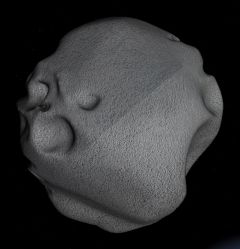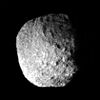 | This natural satellite related article is a stub. You can help Orbiterwiki by expanding it.
| Io
|

|
| Proteus from Uranus and Neptune Moons.zip in Orbiter 2016 with D3D9
|
| Designation
|
| Name |
Proteus
|
| Reference body |
Neptune
|
| Planetary mean orbits
|
| Epoch |
2006.49555099247 (2006 June 30)
|
| Semimajor axis (a) |
117646138.8 m
|
| Eccentricity (e) |
0.000721043486568402
|
| Inclination (i) |
29.03364224°
(0.50673265090984 radian)
|
| Longitude of the ascending node (LAN, ☊) |
50.67821102°
(0.844501641369886 radian)
|
| Longitude of periapsis (ϖ) |
247.9521324°
(4.32758109853377 radian)
|
| Mean longitude (L) |
275.122144°
(4.80178725780075 radian)
|
| Selected physical parameters
|
| Mean radius |
200000 m
|
| Mass |
2.346×1019 kg
|
| Note |
*Elements given are from Proteus.cfg (Uranus and Neptune Moons.zip)
|
Proteus, (Neptune VIII, S/1989 N 1) is the largest inner satellite and the second largest moon of Neptune. Proteus was discovered by Voyager 2 during its flyby of Neptune in 1989. It was later named Proteus, the shape-shifting sea-god of Greek mythology. Proteus is tidally locked to Neptune in that the same side faces Neptune throughout its orbit.
Proteus in Orbiter
Proteus was introduced to Orbiter with the release of uranus-neptune-moons.zip in 2002.
See also
Proteus at Wikipedia
Gallery
Proteus in Orbiter 2002P3
Proteus in Orbiter 2003P2
Proteus in Orbiter 2005P1
Proteus from outerplanets-050125.zip in Orbiter 2005P1
Proteus in Orbiter 2006P1
Proteus from outer_planets-060929-base.zip in Orbiter 2006P1
Proteus in Orbiter 2010P1
Proteus from Uranus and Neptune Moons.zip in Orbiter 2016 with D3D9
Proteus as seen by Voyager 2 in 1989;
from Wikimedia Commons
|











